
Have you ever registered on a website so you could download that free ebook you’re eager to read? Or entered your email address to access the free trial period of an online service?
Well, that’s a “lead magnet?”
Lead magnets are the worms at the end of the fishing line that help reel in prospects and gather their contact information. Usually, these lead magnets are only accessible once the visitor opts-in with their email address, phone number, or other contact information.
Lead magnets are so effective that 51% of B2B customers are likely to exchange their information for accessing a free webinar. Other top lead-generating methods are in-person events and e-books.
A great lead magnet example is Digital Marketers’ Headline Swipe File. The brand designed a pop-up ad for their free lead magnet swipe file on any Digital Marketer site URL that contained the word “social.”
The average conversion rate for this campaign was a staggering 69.6%.

Lead magnets are a severely underrated form of marketing. So we’re here to help you create one of your own with the seven best lead magnets you can create to capture the contact information of more prospective customers for your business to nurture and convert them into paying customers.
Importance of a Lead Magnet
It might seem like a strange idea to give out something valuable that you’ve taken the time and effort to create a freebie. But in the end, the new leads from this handout will be worth the trouble.
Don’t believe us? Well, according to a study, half of all marketers surveyed reported higher conversions using lead magnets.
Many marketing goals are subjective and intangible—brand awareness, trust, engagement, and credibility are what marketers strive to improve but struggle to measure independently. These targets are translated to metrics like email lists, website traffic, sales page landing, and sales conversions.
Lead magnets are one of the biggest keys to achieving the desired numbers for these goals. They provide exposure to your brand, and eventually, this exposure results in likability. These lead magnets help establish and build trust between you and your clients.
7 Best Lead Magnet Templates
- eBook
27.7% of marketers use ebooks to generate leads, making it the most popular lead magnet in the world.
An eBook is typically longer than a blog post and formatted to make it easier to read like a typical book. They are usually not information-heavy as the focus is more on guiding a particular topic. eBooks also offer the benefit of convenience as your leads can read them easily on most devices.
Below is an example of how Zero to Biz is leveraging ebooks to capture their web page visitors’ emails and names.

For a business, an eBook can easily be a collection of blog posts curated to guide clients through a single subject or a case studies to prove a specific point or finding. The organized collection can be presented as a helpful tool for which clients are willing to exchange information.
The objective of a lead magnet is to provide convenience and value to your website’s visitors. Hence, an eBook is an almost perfect template to achieve this.
Here’s a free printable eBook template by Venngage you can use to begin creating yours right away:
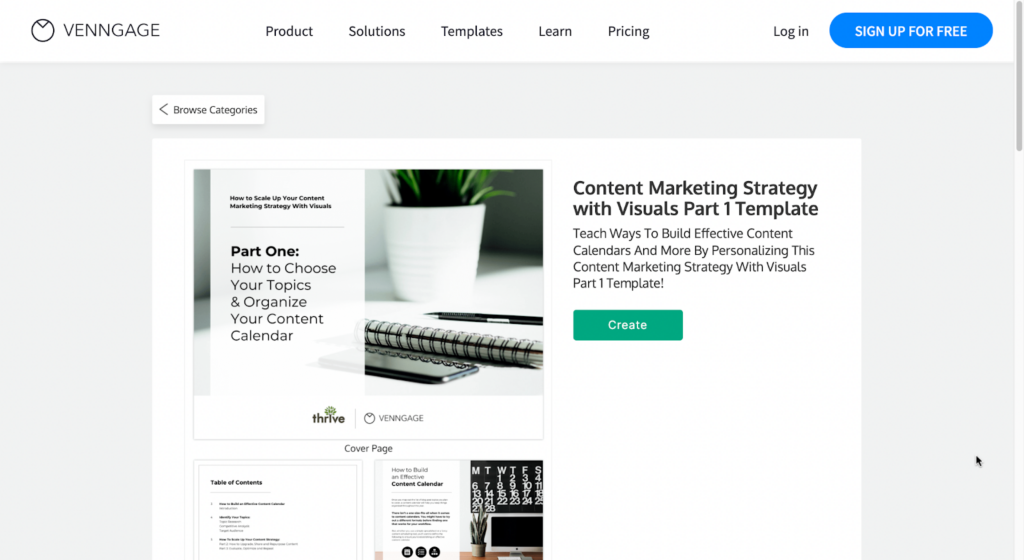
- Checklist
Checklists are a popular choice for generating subscribers, given how easy they are to create and consume. They guide the users by using a step-by-step infographic roadmap that’s easy to follow and ideal for navigating a difficult subject or goal.
ClickMinded, for example, offers several checklists for budding digital marketers to help with their projects. One of them is The Complete Shopify SEO Checklist, which helps marketers and Shopify store owners get basic SEO right for their site without going to an expert.

You can easily convert an existing blog post into a free PDF format checklist for your webpage’s visitors. Simply narrow down the key points of the post into a series of action points. The user will also benefit from adding milestones to complete a section of the checklist.
Use this marketing checklist template to create one for your website as a lead magnet:
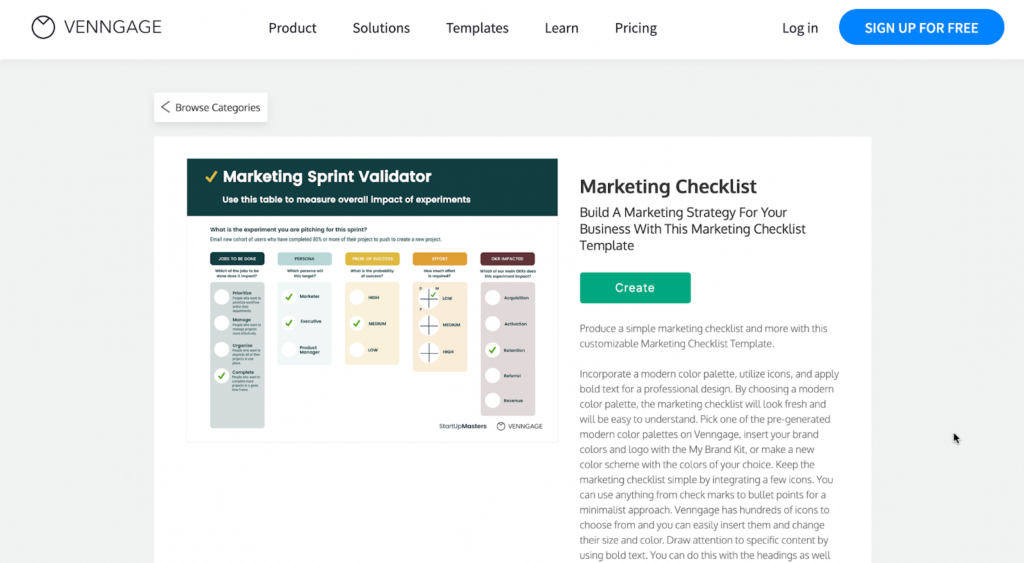
- Cheatsheet
It can be inconvenient to re-read a blog post just to recollect a few points. Cheatsheets offer precisely what the name suggests—a one-page document that users can refer to refresh their knowledge.
Ideally, this cheatsheet can be a summary or an index that clarifies what some terms or phrases mean, or it can act as a hack for achieving a particular goal.
iAdopt provides a pet nutrition chart in exchange for your name and email address. This chart sums up everything a new pet parent needs to know to get started with their pup’s diet but who doesn’t have the time for hours of research.
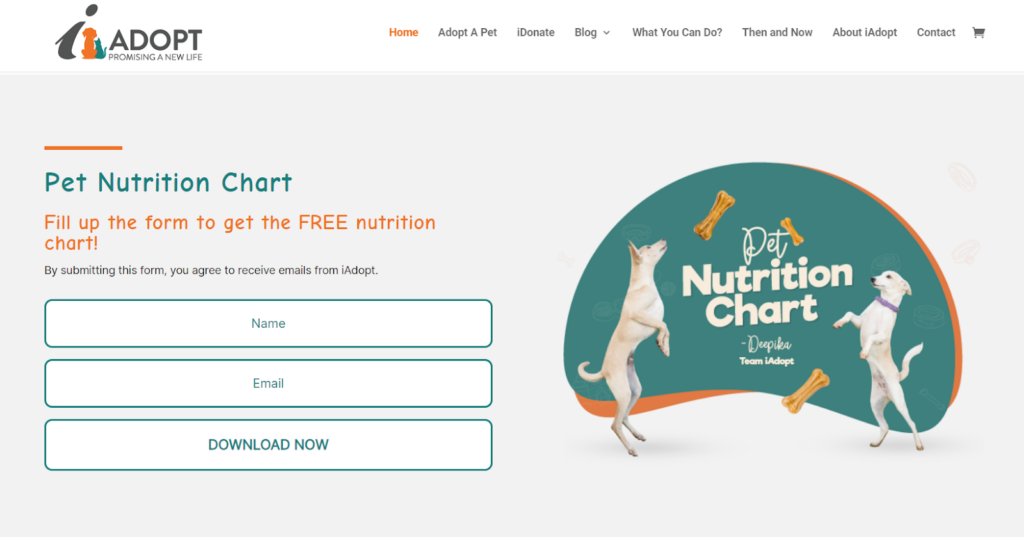
This resource is incredibly useful for people who don’t have the time or capacity to read the larger piece and would prefer keeping a handy cheatsheet with them for a quick peep whenever they want to brush it up. It also makes it easier to memorize the key points, making them valuable.
Ready to begin but don’t know how to create your own cheatsheet?
Use this ready-made comprehensive cheatsheet template by Visme.
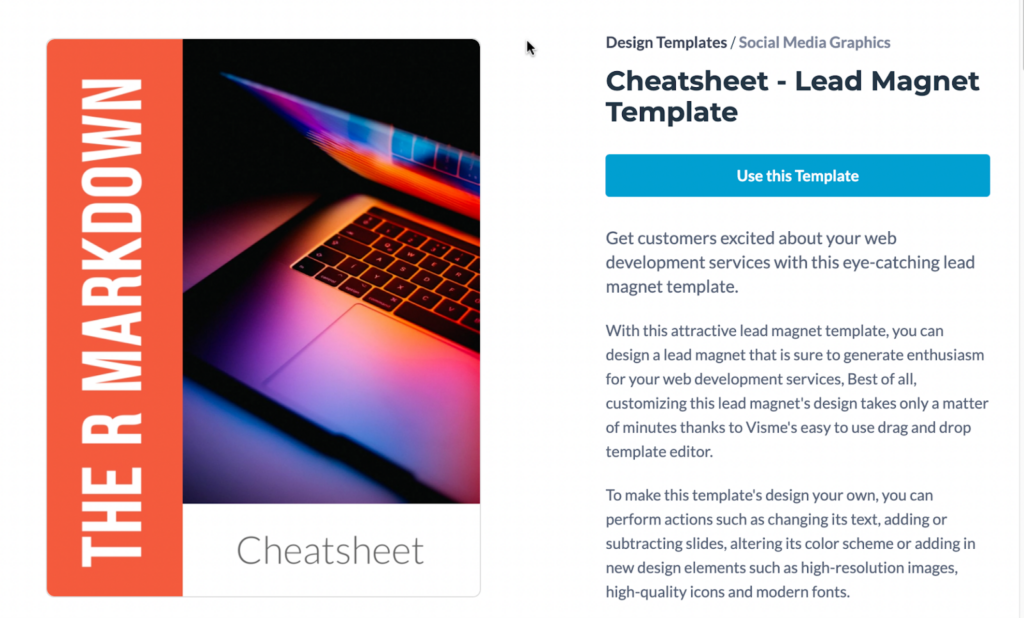
- Planner
It’s always nice to have a reliable planner on hand. Planners guide users as they track their progress towards a goal.
There are different options you can try when offering a free planner. You can integrate it with one of your current offers and create a planner specifically for that process or strategy, or you can provide a blank template for your prospects to fill in themselves.
You get to be more creative with a planner as there’s no standard form, unlike a checklist. This trait can help set your lead magnet apart from other brands. The important aspect is that it should be an editable template for the users’ convenience, which also makes for a great planning tool.
HubSpot offers a 30-day SEO planner to its users in exchange for contact information, as shown below.
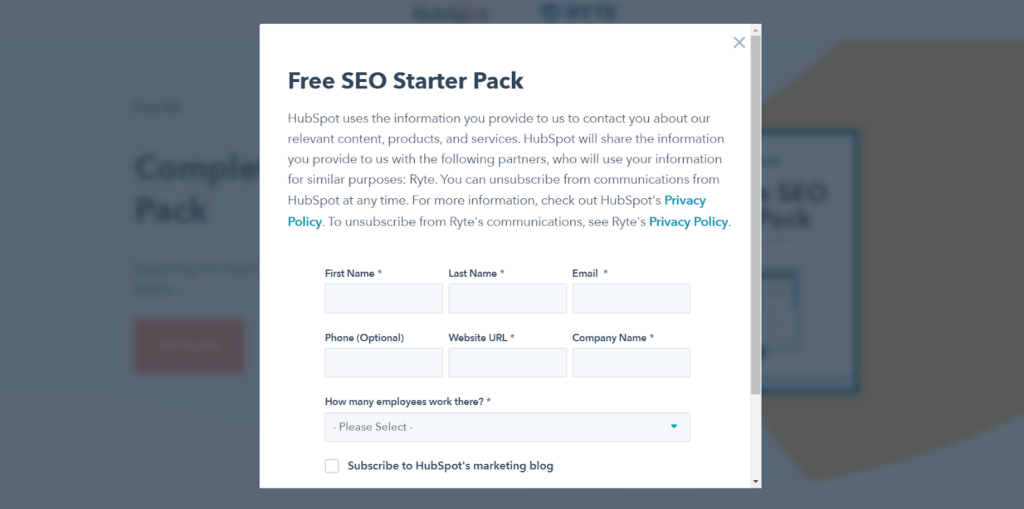
If you want to start creating your first planner, Canva lead magnet templates are a great choice. They also have stunning planner emplates you can use to create your own version and leverage as a lead magnet.

- Toolkit
A toolkit is a compilation of various resources and tools usually related to a specific niche. For example, an Internet marketing toolkit may contain promotional eBooks, a collection of checklists, and other valuable resources that provide value to would-be internet marketers.
When making your toolkit, the important thing to remember is to make sure everything is relevant to the topic you are making it for. Ensure that all the tools you want to include are to the point and will be helpful to the user. For example, if you’re going to make a toolkit about a recipe you made, the toolkit must contain the recipe.
This is more than just giving a link to the original recipe website. Provide details and information about the recipe and make it easy for the reader to follow. If it’s for a toolkit about ‘How to cook a chicken breast with vegetables, then provide step-by-step instructions with pictures. Think about what you would like to see when learning about a topic and make it for your readers.
Target Internet offers a valuable toolkit for digital marketers when they register for a free membership.
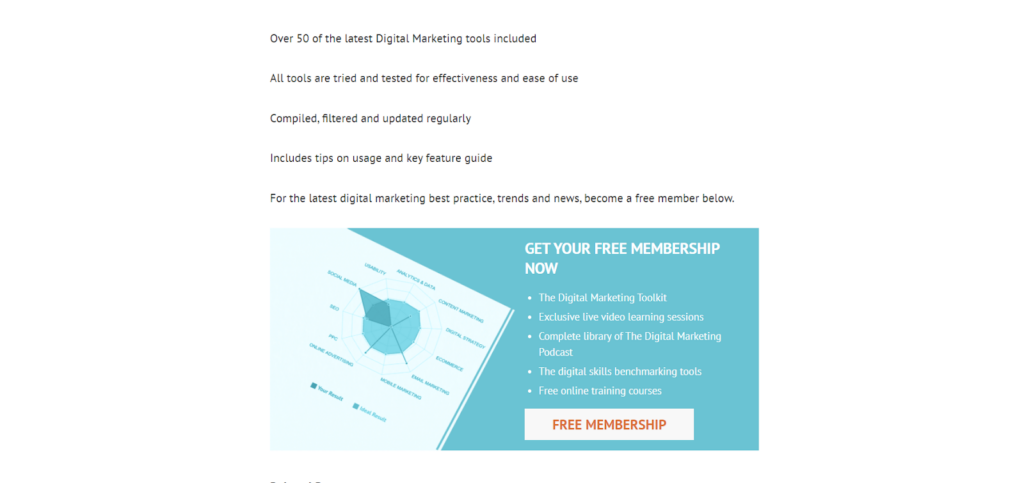
- Workbook
What better way to learn something than by doing it?
Some subjects are better understood with a more practical approach, where workbooks fit perfectly.
A workbook/worksheet is a resource for exercises specifically designed to help users implement the principles they have learned. These exercises need to be designed carefully. Begin with small, simple activities that put the user at ease.
From there, you can add more tasks that require a more intensive level of knowledge to give your audience something to test and practice their learning on.
The First Meeting Workbook by The Futur is a very simple yet innovative approach to generating leads. This workbook helps business owners quickly get a conversation going and figure out pain points with a prospective client in the first meeting.
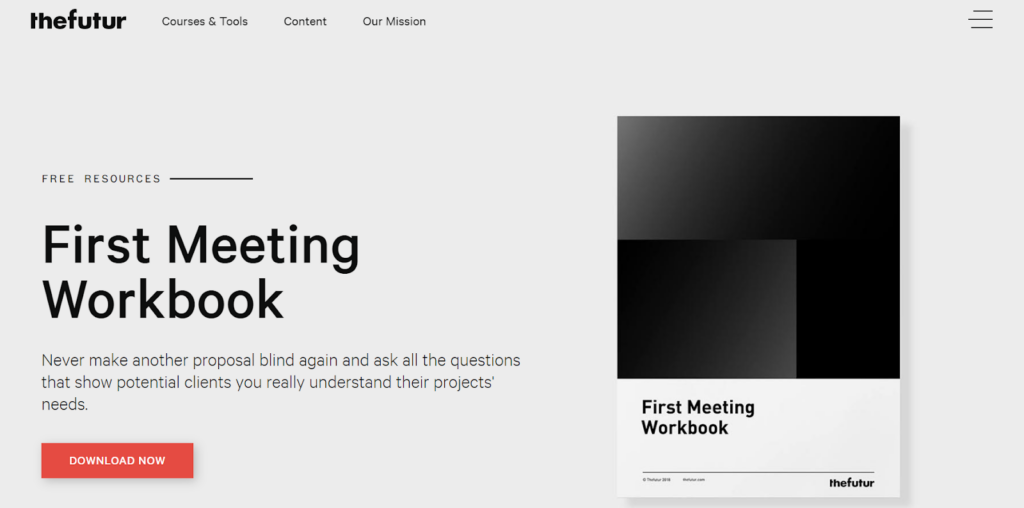
Here’s a marketing plan workbook template for your reference:
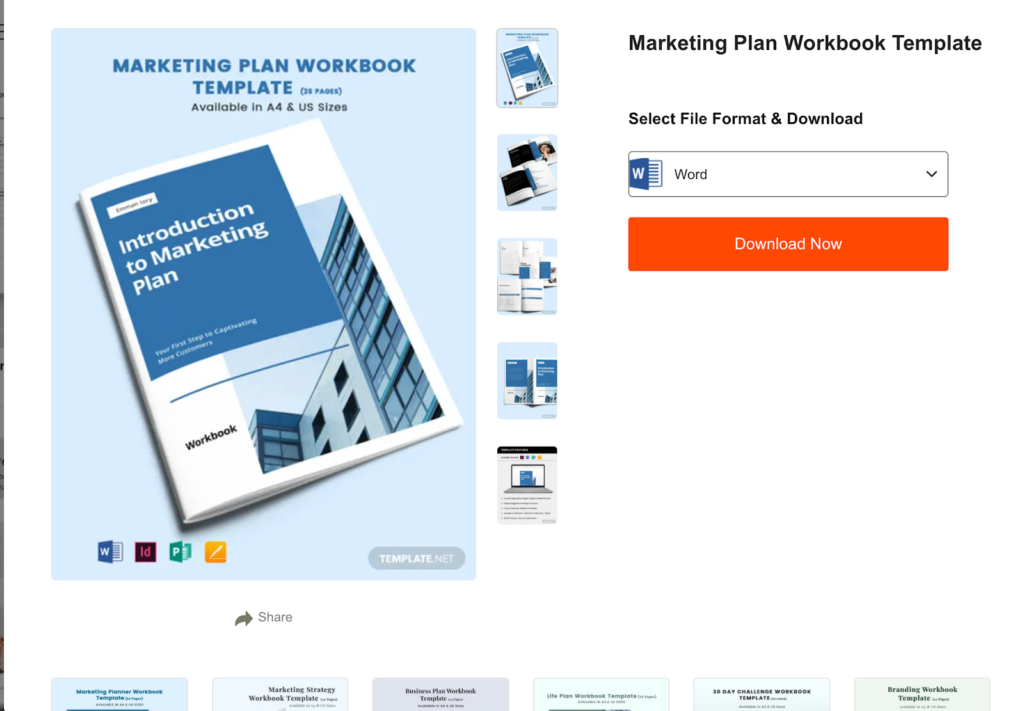
Many course creators also use workbooks in their online courses and webinars. As they can boost engagement. Workbooks can seem complicated to create, but you can find design templates for platforms like InDesign and Canva.
- Swipe File
A swipe file is a collection of templates and other resources that users can refer to or implement as they like. Some common examples of swipe files are Facebook ad templates, blog headlines, and social media templates.
The headline formulas swipe file by Digital Marketers helped them boost their conversions by almost 70%!
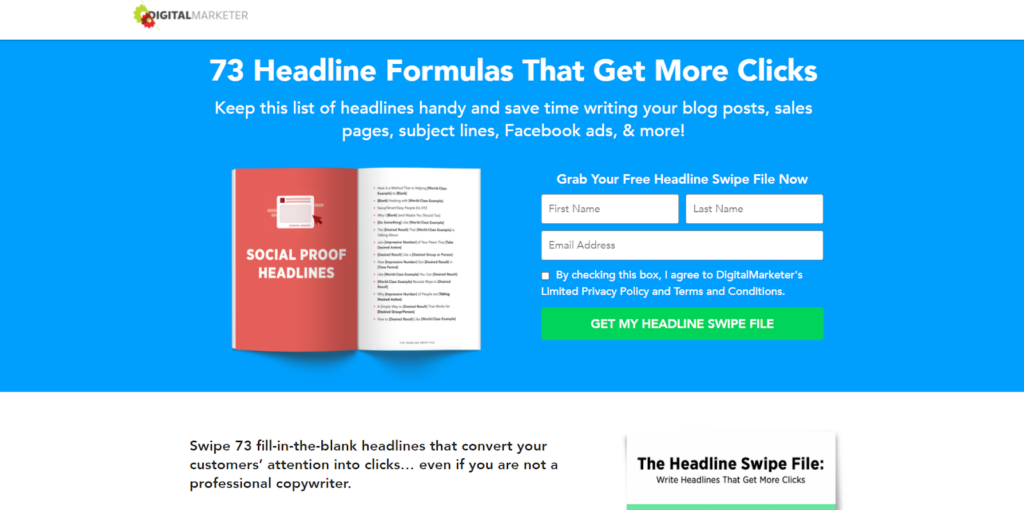
The benefits of creating a swipe file lead magnet are two-fold. First, lead generation will be significant simply because of how much value it holds. Easy-to-use templates and resources packed into one file are perfect for people who would otherwise spend hours of their time manually scavenging these themselves.
Second, you inadvertently end up doing a lot of competitive research in the process of building a swipe file. You can use this information to guide your marketing strategy accordingly.
5 Tips For Creating a Lead Magnet
Now that you’ve got some great ideas for creating a lead magnet that can help you capture qualified leads for your business let’s look at some best practices that can make your lead magnet more effective.
- Repurpose your best performing content
If you have a blog post or webinar that has received a lot of views and shares, you can easily offer it as a lead magnet as you’ve already seen how popular it is with your audience, courtesy of the engagement you saw on it.
You can create content resources like an eBook, webinar, or workbook based on the post as your lead magnet. It should be in a downloadable form, so it’s easier to email the resource to the user.
- Create content for laser-targeted audience segments
Generic lead magnets don’t usually pan out well. Chances are you’ll attract users that are not interested in your business or the industry you operate in, ultimately defeating the purpose of a lead magnet—to drive potential leads in your funnel.
You need to design content that caters to your target audience to increase the chances of “reeling them in.” For this, you need to identify who you’re creating the lead magnet for, study that audience, discover their pain points, and then create a resource that answers their most pressing issues—to encapsulate it as a super valuable resource worthy of exchanging contact information for.
Even beyond content, if you’re planning to advertise the lead magnet on platforms other than your website, you need to consider the demographics and then promote it on channels where your lead magnet audience is most active and most likely to engage.
- Use different lead magnets for separate funnel stages
Lead magnets are designed to match the interest level of your website visitors, which heavily depends on the different funnel stages. These offers can be varied to attract prospects from a distinct conversion funnel stage.

Bottom of the funnel (BOFU) lead magnets that target users who have a genuine interest in your product or service and have likely done a considerable amount of research on your brand and what you can offer can be super beneficial for driving conversions
The lead magnet should be related to your product or service. For example, a free trial. This will lead to a higher chance of converting the prospect into a customer.
You might also want to explore using different positioning for your lead magnets. By this I am referring to popups, welcome mats, content upgrades, etc.
- Use sales pages with highly persuasive copy
A lead magnet is no good if you don’t bring it to your audience’s attention. They should stay on the web page long enough to notice your offer, and the offer itself should be irresistible to the viewer.
Enticing copywriting is one of the best practices for a lead magnet landing page. Visitors should feel like the value they get in return for their email address is worth the trouble of filling the opt-in form.
The best way to achieve this is by creating a solid and clear headline on the page. This needs to be followed by a compelling description of your lead magnet. Explain how it can help the user overcome a problem and provide key takeaways from the content offered like Clickminded did here:
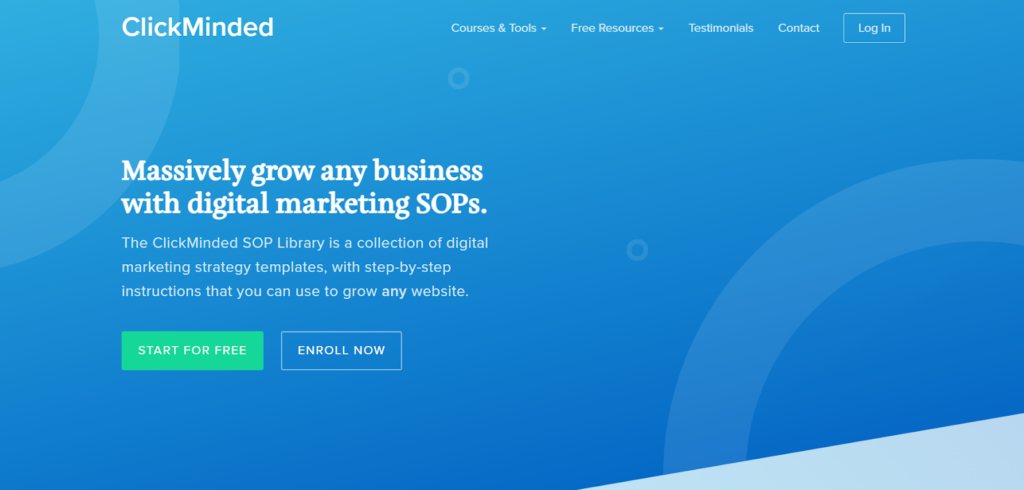
Lastly, make the form as convenient as possible. Keep the number of fields to fill at a minimum. Refrain from asking for sensitive information.
While you’re doing this, ensure you’re conveying “why” they should sign up for the lead magnet and how it can help them in their business or personal life. So, make your copy largely benefit-driven, so more visitors are compelled towards filling in their contact information.
- Perform A/B testing to measure performance
As with all good strategies, lead magnets need to be tested to measure their effectiveness. While your lead magnet has been driving up your conversions, are you sure that’s the best you can achieve?
A/B testing is a useful way to determine the optimal lead magnet for your brand and visitors. A basic testing idea is evaluating the difference in effectiveness between a banner lead magnet and a pop-up lead magnet or changing the copy/CTA of your lead magnet landing page.

Test various ideas, designs, and placements of your lead magnet. This enhances your chances of success, and you will have a point of reference for future lead magnets you may offer.
Conclusion
Lead magnets are one of the best marketing tools for improving conversion rates. They are often easy to create and offer a host of benefits to your users, including helping you build trust with your prospects and enhance brand awareness.
The type of lead magnet you use entirely depends on your brand, available resources, and your target audience. As a general rule of thumb, aim at solving a major pain point of your audience through the lead magnet and sell through that pain to truly provide value to your potential customers.
Use this article to draw inspiration from these lead magnet ideas, choose the best one for your target audience and brand, and then use the best practices to create a stunning lead magnet strategy. This will help you create a comprehensive lead list you can nurture and convert to enhance your customer base and, ultimately, your revenue.
Leave a Reply